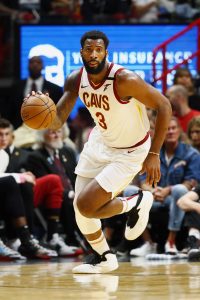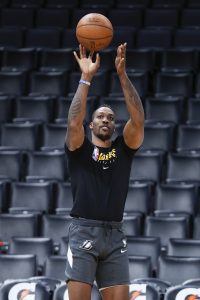The Bird exception, named after Larry Bird, is a rule included in the NBA’s Collective Bargaining Agreement that allows teams to go over the salary cap to re-sign their own players. A player who qualifies for the Bird exception, formally referred to as a Qualifying Veteran Free Agent, is said to have “Bird rights.”
The most basic way for a player to earn Bird rights is to play for the same team for at least three seasons, either on a multiyear deal or separate one-year contracts. Still, there are other criteria. A player retains his Bird rights in the following scenarios:
 He changes teams via trade. For instance, the Cavaliers would hold Andre Drummond‘s Bird rights if he opts for free agency this offseason, despite just acquiring him in February. His Bird clock didn’t reset when he was traded from the Pistons to Cleveland.
He changes teams via trade. For instance, the Cavaliers would hold Andre Drummond‘s Bird rights if he opts for free agency this offseason, despite just acquiring him in February. His Bird clock didn’t reset when he was traded from the Pistons to Cleveland.- He finishes a third season with a team after having only signed for a partial season with the club in the first year. Patrick McCaw finished the 2018/19 season on a contract with the Raptors, then re-signed with Toronto on a two-year deal in the summer of 2019. When that contract expires, McCaw will have full Bird rights because of the partial season he spent with the Raptors last year, which started his Bird clock.
- He signed for a full season in year one or two but the team waived him, he cleared waivers, and didn’t sign with another team before re-signing with the club and remaining under contract through a third season. This one’s a little confusing, but let’s use DeMarcus Cousins as an example. Partway through his one-year contract with the Lakers, Cousins was waived last month and has yet to join a new team. If the Lakers were to re-sign Cousins to a two-year contract in the offseason, without him joining a new team in the interim, they’d have his full Bird rights at the end of that deal.
A player sees the clock on his Bird rights reset to zero in the following scenarios:
- He changes teams via free agency.
- He is waived and is not claimed on waivers (except as in scenario No. 3 above).
- His rights are renounced by his team. However, his Bird clock resumes where it left off if he re-signs with that team without having signed with another NBA team. For example, Mike Scott had his rights renounced by the Sixers last July, as Philadelphia attempted to gain cap flexibility. Scott eventually signed a new two-year deal with the 76ers and will have full Bird rights at the end of it.
- He is selected in an expansion draft.
If a player who would have been in line for Bird rights at the end of the season is waived and claimed off waivers, he would retain only Early Bird rights. Meanwhile, a player with Bird rights who re-signs with his previous team on a one-year contract (or a one-year deal with a second-year option) would lose his Bird rights if he’s traded. As such, he receives the ability to veto trades so he can avoid that scenario.
[RELATED: Players with the ability to veto trades in 2019/20]
When a player earns Bird rights, he’s eligible to re-sign with his team on a maximum-salary contract for up to five years with 8% annual raises when he becomes a free agent, regardless of how much cap room the team has. The maximum salary will vary for each player depending on how long he has been in the league, but regardless of the amount, a team can exceed the salary cap to complete the deal.
A team with a Bird free agent is assigned a “free agent amount” or cap hold worth either 190% of his previous salary (for a player with a below-average salary) or 150% of his previous salary (for an above-average salary), up to the maximum salary amount. For players coming off rookie scale contracts, the amounts of those cap holds are 300% and 250%, respectively.
The Pelicans, for instance, will have a cap hold worth $21,796,456 for Brandon Ingram on their 2020/21 books — 300% of his $7,265,485 salary for 2019/20. New Orleans could renounce Ingram and clear an extra $21MM+ in cap space, but the Pelicans would lose the ability to re-sign him using Bird rights in that scenario, which would force them to use either cap room or a different cap exception to re-sign him. As such, the club figures to keep that cap hold on its books until Ingram is officially re-signed.
Ultimately, the Bird exception was designed to allow teams to keep their best players. The CBA ensures that teams are always able to re-sign them to contracts up to the maximum salary, assuming the player is interested in returning and his team is willing to go over the cap.
Note: This is a Hoops Rumors Glossary entry. Our glossary posts will explain specific rules relating to trades, free agency, or other aspects of the NBA’s Collective Bargaining Agreement. Larry Coon’s Salary Cap FAQ and salary information from Basketball Insiders was used in the creation of this post.
Earlier versions of this post were published in previous years by Luke Adams and Chuck Myron. Photo courtesy of USA Today Sports Images.
